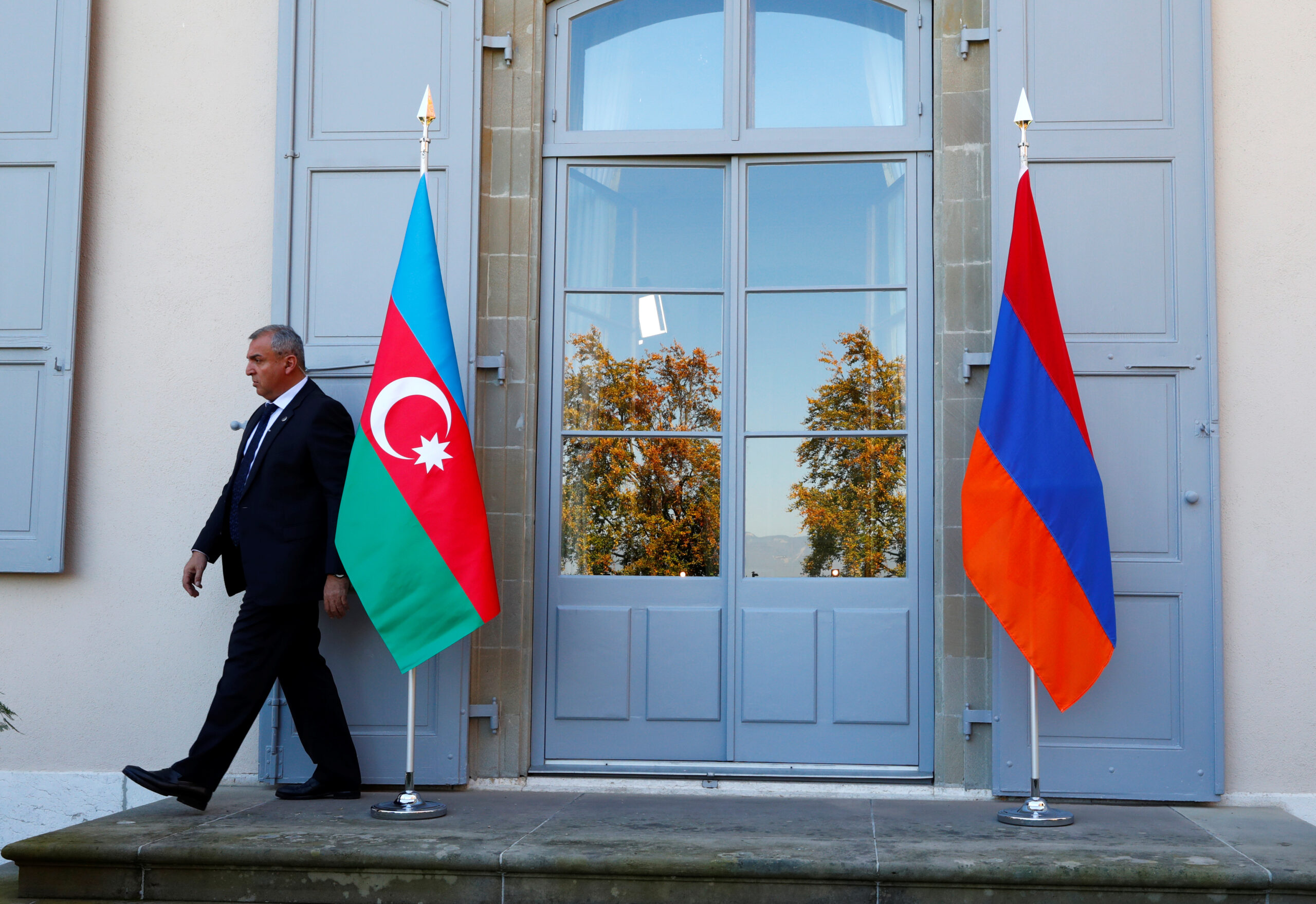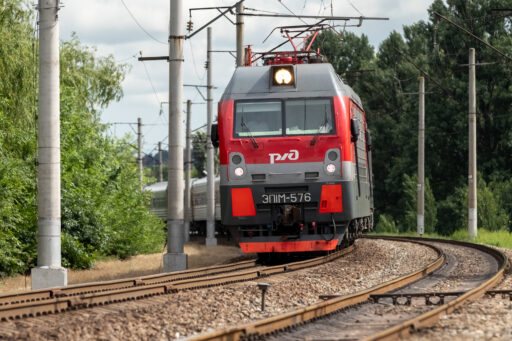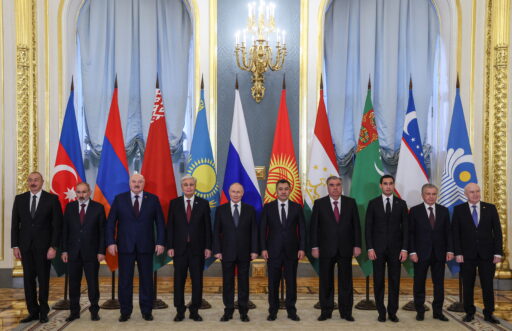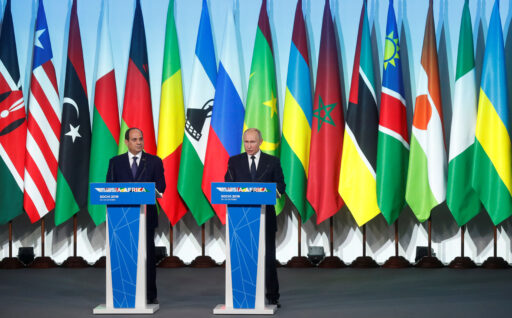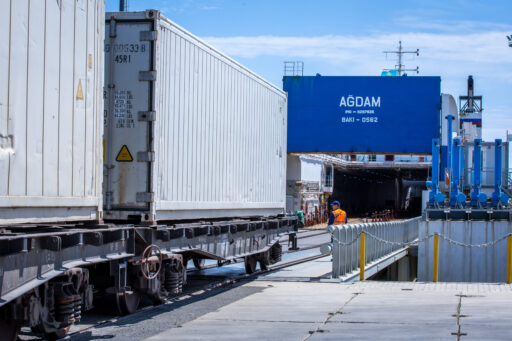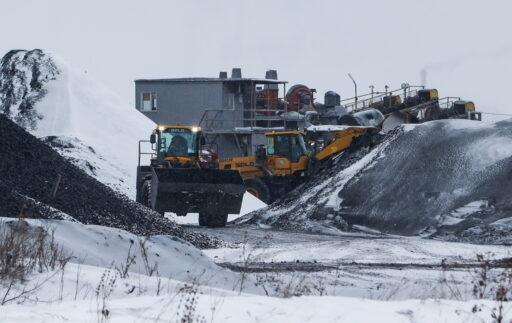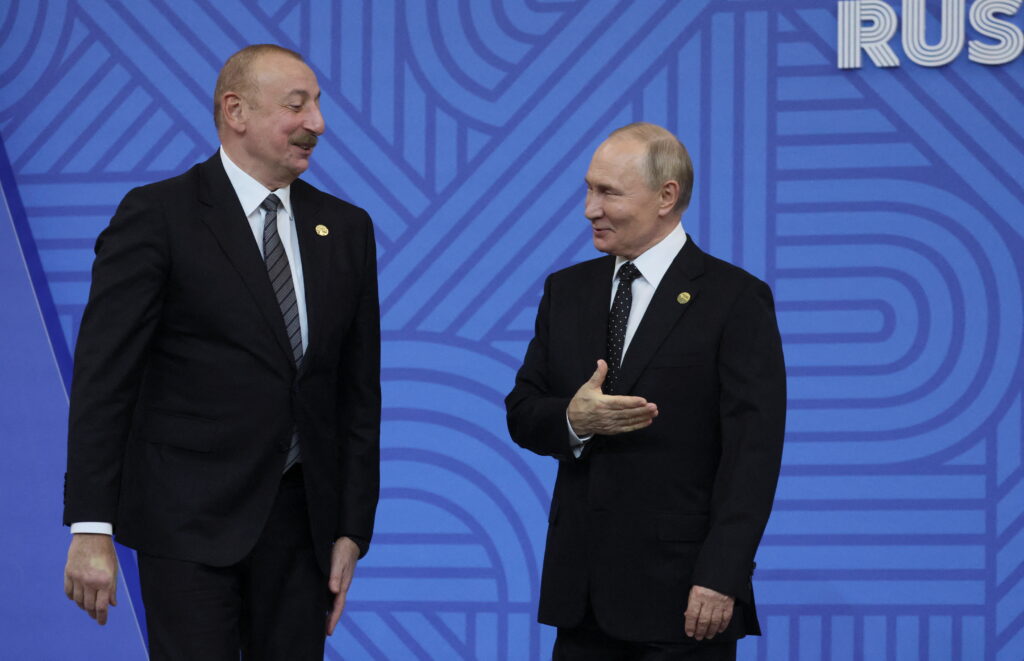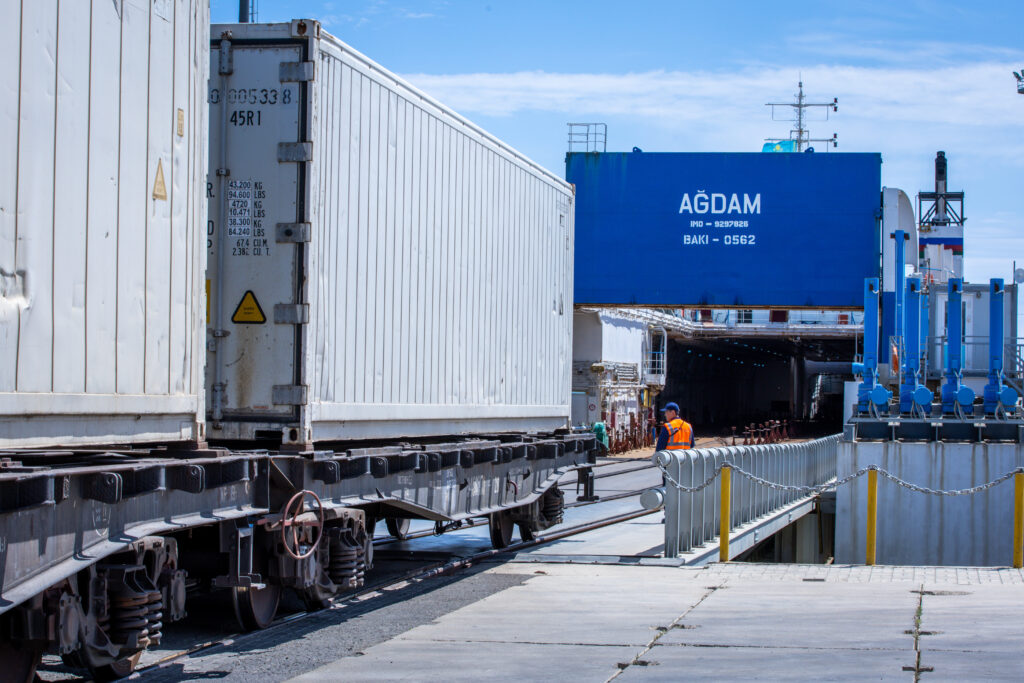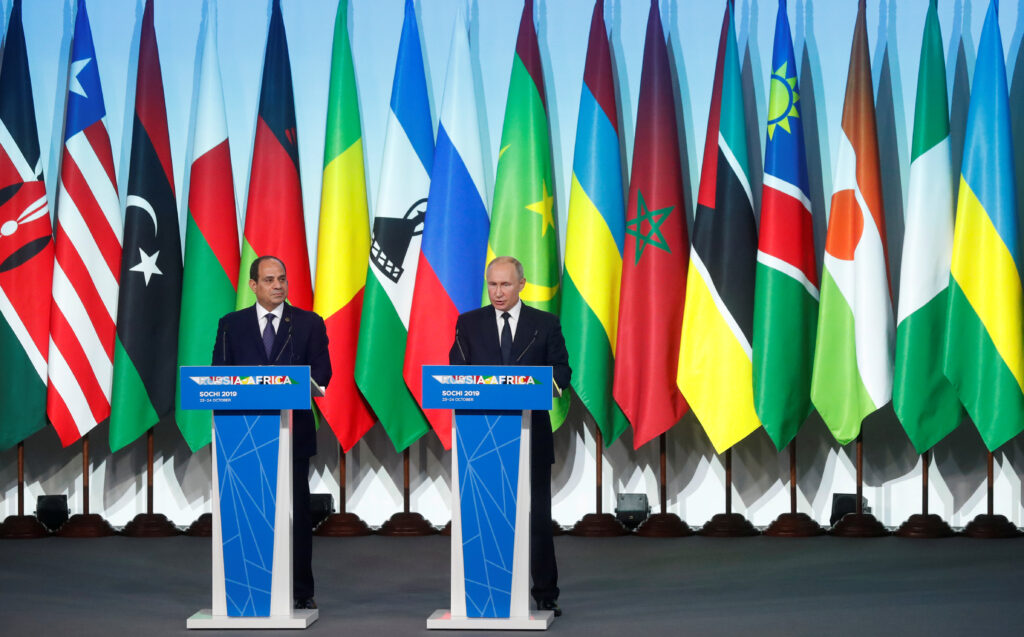At the beginning of August, a news item appeared in the news feeds that should have been of no interest to those with no personal or professional ties to the South Caucasus. Azerbaijan and then Armenia simultaneously announced that the clause providing for the «unblocking of transport routes» had been removed from the draft peace treaty. If one considers this removal in the context of the settlement between the two countries, then this is a clear breakthrough: for the past three years, it was the infamous issue of «transport communications» that had been a stumbling block on the road to settlement, literally paralyzing the negotiations. However, it is incorrect to use the plural here: de facto, there has only been one «transport communication line» at stake here: a road and railway between the Azerbaijani town of Horadiz and Nakhichevan passing through a narrow strip of Armenian territory with the town of Meghri.
For Yerevan, this was a real nightmare: Azerbaijanis were meant to receive the right to transport any cargo through the Armenian territory under some special conditions (i.e. without inspection by the Armenian border guards). However, it was impossible for the Armenian side to give up the road at that time: it was a key point of the trilateral declaration of November 9, 2020, thanks to which Armenia did not lose all of Artsakh back in 2020.
Given the disastrous imbalance of power in Baku’s favor after the 2020 war, one could well imagine a whole range of escalation scenarios. Imagine, a stone being thrown (or allegedly thrown) at an Azerbaijani car, thereby enabling Aliyev to immediately launch a violent reprisal against the «provocateurs.» Or a military convoy stopping on the road «because a vehicle broke down» — and its sheer presence threatens the entire southern part of Armenia. The situation was aggravated by the fact that the road was to pass only a few meters from the Armenian-Iranian border, and Iran, with all its peculiarities, is one of Armenia’s two neighbors with which it has an open border and trade relations.
However, with the exception of Armenia, all other parties involved liked the project. And now that it is not tied to a peace treaty, the question is: will the world’s strongest players allow it to be abandoned so easily?
A route with history
During World War II, the concept of «Zangezur Corridor» was virtually unknown, but the route itself played an important role in the Allied victory. British and American Lend-Lease supplies (especially Studebaker trucks) were first delivered by sea to Iranian ports, and then either to Caspian ports (from where one can travel to Makhachkala or Astrakhan) or to the Julfa railway station in the Nakhichevan ASSR (click the link for a photo of Soviet and British generals in front of a train). From this station one could easily reach Yerevan (and on to Georgia, Sochi and Rostov-on-Don) or Baku (and from there to Dagestan and on to Stalingrad).
After the war, the Moscow-Baku-Tehran train used to run on this route; it also crossed the Soviet-Iranian border at Julfa. Trains from Yerevan to southern Armenia — to Meghri and Kapan — also passed through Nakhchivan. The same route was often used by motorists who preferred to drive safely on the plain rather than brave the dangerous serpentine roads near Tatev Monastery.
This made the Georgian-Abkhazian and Karabakh conflicts that erupted against the backdrop of the collapse of the USSR all the more dramatic for the entire region. Due to the tensions between Georgia and Abkhazia, one could no longer get to Georgia and Armenia by rail, and without an open Armenian-Azerbaijani border, it was impossible to go to Iran and Turkey. Moreover, during the First Karabakh War, Armenian troops occupied significant areas along the Iranian border, and the railroad tracks that ran for miles were simply dismantled for scrap metal. In the 1990s, one of the projects for the resolution of the Karabakh conflict, the so-called «Goble Plan», envisaged that Karabakh (except for the seven occupied regions) would become part of Armenia if, in return, Armenia would hand over Meghri to Azerbaijan, thus making the neighboring country’s territory complete without the Nagorno-Karabakh exclave. The project failed because of its naivety, but the sheer idea of connecting Nakhchivan to the rest of Azerbaijan has not vanished.
Therefore, when the Karabakh conflict was de facto resolved by force, it seemed perfectly logical and appropriate to revive the logistics of the region conceived in the USSR (or even in the Russian Empire). According to the Trilateral Agreement, the control over the «Zangezur Corridor» was to be exercised by the Russian border guards who have been stationed on the Armenian-Iranian border since 1992.
In 2021, the plan was widely believed to be viable, and even Ilham Aliyev threatened that he would build the corridor «whether Armenia wants it or not.» In 2022, the «unblocking of transport communication routes» was named as the fundamental point of normalization of relations between Baku and Yerevan. However, against the backdrop of the ongoing Russian-Ukrainian war, all foreign policy processes are developing with a very different dynamics than before.
«North-South» and «Central Corridor»
In the course of the infamous eight years between the annexation of Crimea and the beginning of Russia’s full-scale invasion of Ukraine, both Moscow and Western actors attempted to reorganize logistical routes in preparation for a real Cold War. Not all of these attempts were successful.
Russia’s logic was to improve the routes to China, Iran and India — i.e. countries that are ready to trade no matter what. In the case of China, everything was simple: it was enough to modernize The Baikal-Amur Mainline (BAM) and the Trans-Siberian Railway. These works started in 2014, and now we can already talk about the result: the throughput capacity of the main line has reached 173 million tons per year, and this is not the limit yet.
The routes to the south turned out to be a more complicated matter. It is still possible to deliver cargo from Russia to Iran, either by the Caspian Sea or by land through Azerbaijan. But the railroad tracks break off at the Iranian border town of Astara, and the only access to Tehran or the Persian Gulf ports is by truck.
To remedy this situation, Russia and Iran have long discussed the construction of the Astara-Rasht–Qazvin railroad, which would link the post-Soviet railroad network with the Iranian one. However, this long-delayed construction has been dragging on and on for decades now. In 2018, the Iranians finally completed the section between Resht and Qazvin (it runs through a mountain range), but the second section remains unfinished until this day. If it is to be completed, it will only be if Russia pays for all of it. Against this background, the idea of the «Zangezur Corridor» looks much more attractive, although it has a serious detour (from Baku to Goradiz, from Goradiz to Julfa, from Julfa to Tabriz, and only from there to Tehran), it still makes it possible to deliver cargo where it is needed.
That is why the North-South corridor through Astara was one of the main topics of discussion during Vladimir Putin’s recent visit to Baku. Sergey Lavrov, for his part, tried to make it clear that the Zangezur Corridor, which was left out of the draft peace treaty, should not be written off either. He accused Yerevan of «sabotaging the agreement signed by Pashinyan,» even though all other clauses of the same agreement (e.g., the Lachin Corridor, through which Armenians could travel to Artsakh) are also de facto inactive.
Talk of Russia being the main lobbyist for «unblocking transport communications» in the South Caucasus has been popular in the West for the past three years. But now everyone has come to realize that there will probably be no transportation lines, no communications for many years to come, but the Kremlin has not been particularly indignant about this. Apparently, they are counting on the possibility that an alternative to the «Zangezur Corridor» could be built through Iran — the same route, but on the other side of the narrow border river Aras.
But here is the paradox: the same route is needed not only for Russia to trade with the Global South, but also for Western countries to avoid travelling through Russia. The only difference is in which direction the train will continue from Julfa — to Iran or to Turkey. There are no railroad tracks leading there yet, but this task does not look difficult and is already being solved.
Maps have been drawn since about 2014 showing the route from China to Europe going not through Russia, but through Kazakhstan, the Caspian Sea, the South Caucasus, and Turkey. Later the project was called the «Middle Corridor» (in Russian — Sredinniy or Srednyi Korridor, in Turkish — Orta koridor) or the China-Central Asia Corridor. But the implementation of this idea is problematic at best. Today it is not a problem to deliver cargo from China to Kazakhstan, just as it is not a problem to deliver it to the port of Aktau on the Caspian Sea. Soon, if all goes well, there will be other branches of the same route — for example, the Uzbekistan-Kyrgyzstan-China railway. But once the containers cross the Caspian Sea, there is no choice: they have to be reloaded onto the Baku-Tbilisi-Kars railway, because there is no other way to reach Turkey. After modernization, the capacity of this railroad has increased from 1 to 5 million tons per year, which is clearly insufficient for a route of global importance.
The Zangezur corridor would make the situation less hopeless, but on one condition: if it goes through Armenia, not Iran. «If we can open a road through Azerbaijan and Armenia, they will have access to global markets and be much less dependent on Russia and China. So it is all part of the process of allowing countries to choose their own paths to global markets,» said US Assistant Secretary of State for European and Eurasian Affairs James O’Brien. His logic is obvious: if at least part of the road goes through Iran (and we are talking about 45 kilometers), Western companies will not be able to use it because of the sanctions. Despite Armenia’s current rapprochement with the West, this may lead to an unpleasant conversation, because for Yerevan the «Iranian route» is a lifesaving opportunity to keep Azeris out of their territory.
Central Asian countries also have their own interests in developing new routes through the South Caucasus, and it is no coincidence that they invited Ilham Aliyev to the recent regional summit. «The region has every opportunity to become one of the most important transport, logistics and transit hubs in the world,» writes Kasym-Jomart Tokayev in a policy article. — «Together with its partners Kazakhstan is actively developing the Trans-Caspian International Transport Route (the Middle Corridor), along which the volume of transport can be increased fivefold in the medium term». It sounds impressive, but if we exclude the South Caucasus from this scheme, any transit ceases to be a transit, and the route ceases to be at least a partial alternative to the existing ones.
By agreeing to remove the «unblocking of transport routes» from the agreement, Azerbaijan and Armenia can move closer to signing a framework document, which will be the first of many steps toward a full-fledged settlement. But given the attention of other actors to this route, the idea of the Zangezur Corridor is certainly not dead. Moscow, Washington and Beijing will all try to push this process in the direction they want.
Paradoxically, whatever happens, Baku remains in a win-win situation. If the U.S. and other Western players do not categorically agree to a route through Iran, it is in their interests to continue pressuring Armenia to allow it through its own territory. Ilham Aliyev’s hands will remain clean and no one will be able to say that he is blackmailing his neighbor with a new war, which under the current arrangement would be a war of invasion and conquest.
